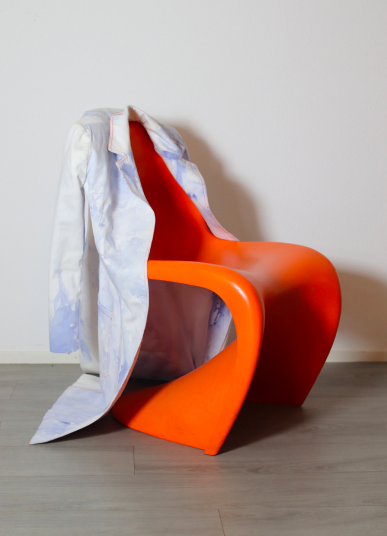Maltese Fashion Designer Explores Dyeing Textiles With Bacteria As Sustainable Alternative

A Maltese graduate in fashion design explored bacteria dyes as a sustainable alternative to toxic synthetic dyes in her research practice.
Lindsay Azzopardi has just concluded her bachelor’s in Fashion Design at the Amsterdam University of Applied Sciences with a sustainable fashion collection after she secured a scholarship from the Malta Arts Scholarship.
“My collection is called The Lab Collection – as the name implies, it is inspired by and designed in a laboratory,” Lindsay told Lovin Malta.
Lindsay graduated with a psychology degree from the University of Malta in 2015, after which she started working as a recruiter for a local agency.
However, she started to experience a “creative void”, and that’s when she decided to sign up for a Fashion Design evening course at MCAST.

“I enjoyed this course so much that I decided I wanted to take this seriously and make a career as a fashion designer,” she expressed.
“Immediately upon starting my studies, I learned how polluting the fashion industry is. Water, air, and soil are all negatively affected by the production of fashion, making textile dyeing the second largest water polluter globally.”
“Due to the unsustainable ways products are being made, designers (across the board) are experiencing an urgency to alter the current way of working, looking into biotechnological advancements to significantly improve the overuse of land, water and environmental degradation overall.”
At a lab on my campus, Linsday had the opportunity to explore sustainable dyes using bacteria to create pigments on textiles.
Unlike synthetic dyes, cultivating bacteria for their pigment is a resource-saving dyeing method which does not require harmful chemicals, hence making it very sustainable.
“Additionally, unlike plant-based pigments, the bacterial strains multiply in a very small space as they do not require large areas of land, the use of pesticides or high amounts of water resources.”

“Microorganisms are abundant and are an easily renewable resource that gives rise to dyeing production with a potentially greater yield.”
“For my graduation project, I created The Lab Collection, a sustainable fashion collection inspired by and designed in a laboratory, composed of contemporary and casual pieces,” she explained.
“The organic violet print within this collection is achieved from a soil-dwelling bacterium, Janthinobacterium lividum. Pre-loved lab coats were upcycled and incorporated into the looks. Other materials used in the collection were sourced from deadstock.”
Linsday expressed that now that she has finished her studies, she wants to pursue this path of sustainable fashion design.
“I want to help commercial companies integrate more biomaterials and make sustainable choices in producing garments and accessories within the fashion industry,” she said.
Share to raise awareness about this concept
